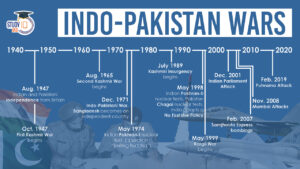Table of Contents
Context: The planet is likely to warm up by two degrees Celsius by 2050, even under a low-emission scenario, according to a new study published in Proceedings of the National Academy of Sciences.
Key Highlights of the Study
- Methodology: The researchers used artificial neural networks (ANN) to predict the time for reaching the 1.5°C and 2°C thresholds.
- The team trained the ANN using climate model simulations and historical temperature observations to make future predictions.
- Key projections of the study:
- Currently, the world has recorded a 1.1°C rise in temperature (compared with the average in 1850-1900) and is expected to reach the 1.5°C threshold between 2033 and 2035.
- The world could touch 2°C by 2050 under the high-emission scenario, 2049 and 2054 in the intermediate and low-emission scenarios, respectively.
- The above projections are in contrast with the previous projections of the Intergovernmental Panel on Climate Change (IPCC).
- Implications: Warming above the thresholds of 1.5°C and 2°C can cause a broad range of climate risks — such as impacts on human health, economic growth, crop yields, coastal and small island communities, terrestrial and marine ecosystems, as well as the frequency, intensity and cost of extreme climate events.
- Significance of Limiting Warming:
- Limiting warming to 1.5°C would reduce the number of people frequently exposed to extreme heatwaves by about 420 million.
- It could also reduce the probability of drought and risks related to water availability.
- Failure of Paris Agreement: With the current rate of warming, the study suggested that we may fail to uphold the Paris Agreement.
- The Paris Agreement aims to limit the rise to below 2°C while pursuing efforts to limit the increase to 1.5°C.
What are Artificial Neural Networks (ANN)?
- They are a type of computer program that are designed to mimic the structure and function of the human brain.
- They use complex algorithms to analyze data and make predictions based on that data.
- ANNs are used in many different fields, such as image recognition, speech recognition, natural language processing, and prediction.

Previous Projections by the IPCC
- The IPCC estimated the likelihood of touching 2°C of global warming during the mid-21st century is high under a high-emission scenario.
- But low and extremely low warming scenarios are “unlikely and extremely unlikely to cause 2°C of warming by the end of the 21st century,” the IPCC projections read.
What are all the Impacts of Global Warming?
- Environmental impacts:
- Melting of glaciers and polar ice caps
- Rising sea levels
- Changes in precipitation patterns
- Increased frequency and intensity of natural disasters such as hurricanes, droughts, and floods
- Ecological impacts:
- Loss of biodiversity
- Changes in migration patterns of plants and animals
- Shifting of ecosystems
- Changes in the timing of events such as flowering and migration
- Social and economic impacts:
- Displacement of people due to rising sea levels and natural disasters
- Decreased food security due to crop failures
- Decreased access to water sources
- Economic losses due to damage to infrastructure, businesses and loss of productivity
- Health impacts:
- Increased spread of diseases due to changes in temperature and precipitation patterns
- Heat-related illnesses
- Increased air pollution
- Malnutrition due to decreased food security


 Pakistan-Occupied Kashmir (PoK): History...
Pakistan-Occupied Kashmir (PoK): History...
 List of Indo-Pakistan Wars and Conflicts...
List of Indo-Pakistan Wars and Conflicts...
 Daily Quiz 24 April 2025
Daily Quiz 24 April 2025





















